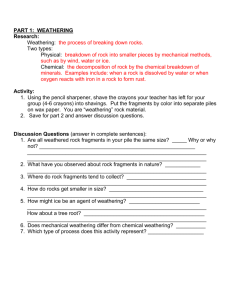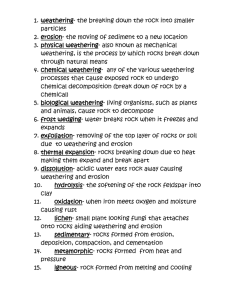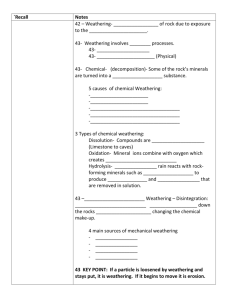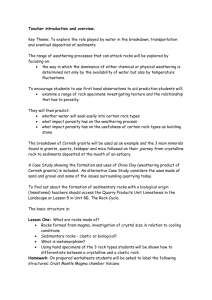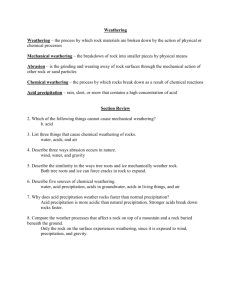Watson make up for lab 2015-10
advertisement
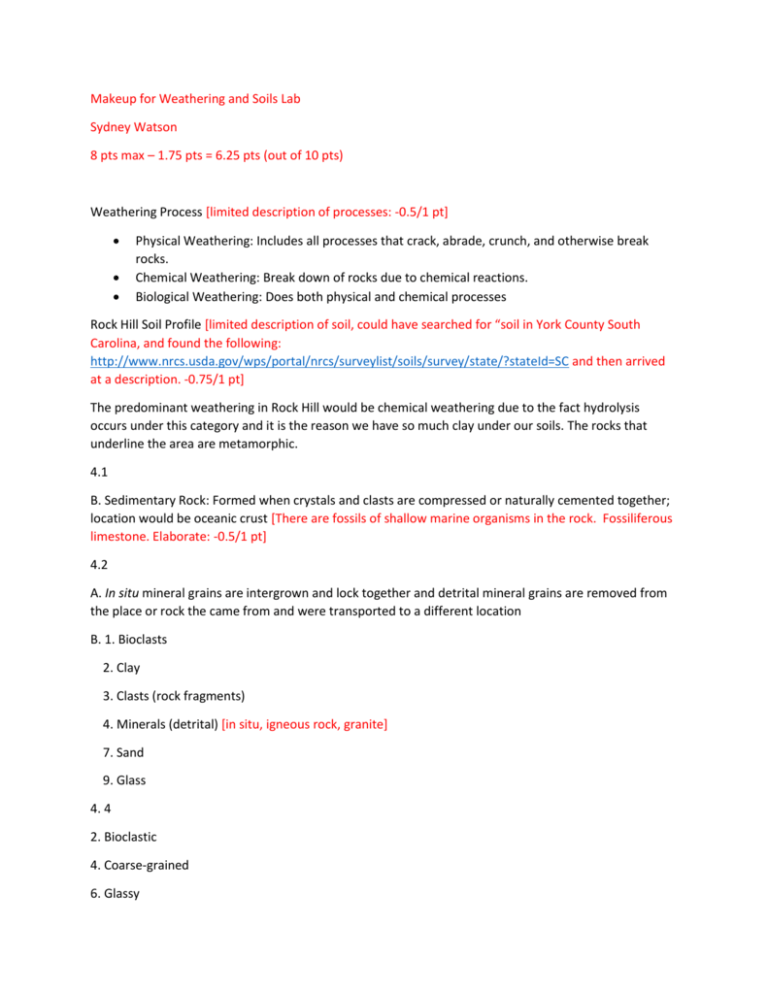
Makeup for Weathering and Soils Lab Sydney Watson 8 pts max – 1.75 pts = 6.25 pts (out of 10 pts) Weathering Process [limited description of processes: -0.5/1 pt] Physical Weathering: Includes all processes that crack, abrade, crunch, and otherwise break rocks. Chemical Weathering: Break down of rocks due to chemical reactions. Biological Weathering: Does both physical and chemical processes Rock Hill Soil Profile [limited description of soil, could have searched for “soil in York County South Carolina, and found the following: http://www.nrcs.usda.gov/wps/portal/nrcs/surveylist/soils/survey/state/?stateId=SC and then arrived at a description. -0.75/1 pt] The predominant weathering in Rock Hill would be chemical weathering due to the fact hydrolysis occurs under this category and it is the reason we have so much clay under our soils. The rocks that underline the area are metamorphic. 4.1 B. Sedimentary Rock: Formed when crystals and clasts are compressed or naturally cemented together; location would be oceanic crust [There are fossils of shallow marine organisms in the rock. Fossiliferous limestone. Elaborate: -0.5/1 pt] 4.2 A. In situ mineral grains are intergrown and lock together and detrital mineral grains are removed from the place or rock the came from and were transported to a different location B. 1. Bioclasts 2. Clay 3. Clasts (rock fragments) 4. Minerals (detrital) [in situ, igneous rock, granite] 7. Sand 9. Glass 4. 4 2. Bioclastic 4. Coarse-grained 6. Glassy 7. Clastic 8. Fine-grained 12. Clastic (angular)




